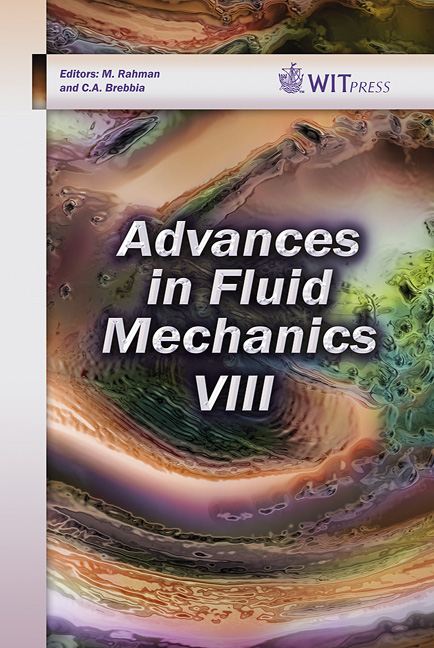Modelling Nanoparticle Transport In An Animal Exposure Chamber: A Comparison Between Numerical And Experimental Measurements
Price
Free (open access)
Transaction
Volume
69
Pages
11
Page Range
533 - 543
Published
2010
Size
4,091 kb
Paper DOI
10.2495/AFM100461
Copyright
WIT Press
Author(s)
F. Morency & S. Hallé
Abstract
Modelling nanoparticle transport in an animal exposure chamber: a comparison between numerical and experimental measurements F. Morency & S. Hallé Département de Génie Mécanique, École de Technologie Supérieure, Canada Nanoparticles transport in an exposure chamber is investigated using computational fluid dynamics (CFD). This exposure chamber is used to assess the lung toxicity in rats resulting from the inhalation of airborne NPs. The mathematical model for airflow is based on the three-dimensional Reynoldsaveraged Navier-Stokes equations with turbulence modelling. Simulations of airborne NPs are based on assumptions such that their motions are similar to the ones of a single sized diameter distribution of a passive contaminant. Keywords: nanoparticles, CFD, exposure chamber, passive contaminant. 1 Introduction The evaluation of the potential hazards for human health associated with inhalation or other form of contact with nanoparticles (NPs) is a question of much interest in the scientific community. Indeed, the phenomenal emergence of various types of nanotechnologies led many governmental agencies to present discussion papers on the safe use of nanometric scale particles, herein called NPs. These international reports are unanimous in supporting proactive measures to ensure the safety of workers exposed to NPs [1, 2]. One of the basic elements for the risk assessment evaluation in a work environment consists in an adequate characterization of the degree of exposure. In the case of exposition to airborne NPs, numerical simulations could be used advantageously as a tool to safely predict these exposure levels. In order to achieve this though, the development of models is still required. It is expected that these models once validated will make it possible to predict the behaviour of airborne NPs in a workplace environment, to evaluate the effective exposure of
Keywords
nanoparticles, CFD, exposure chamber, passive contaminant





